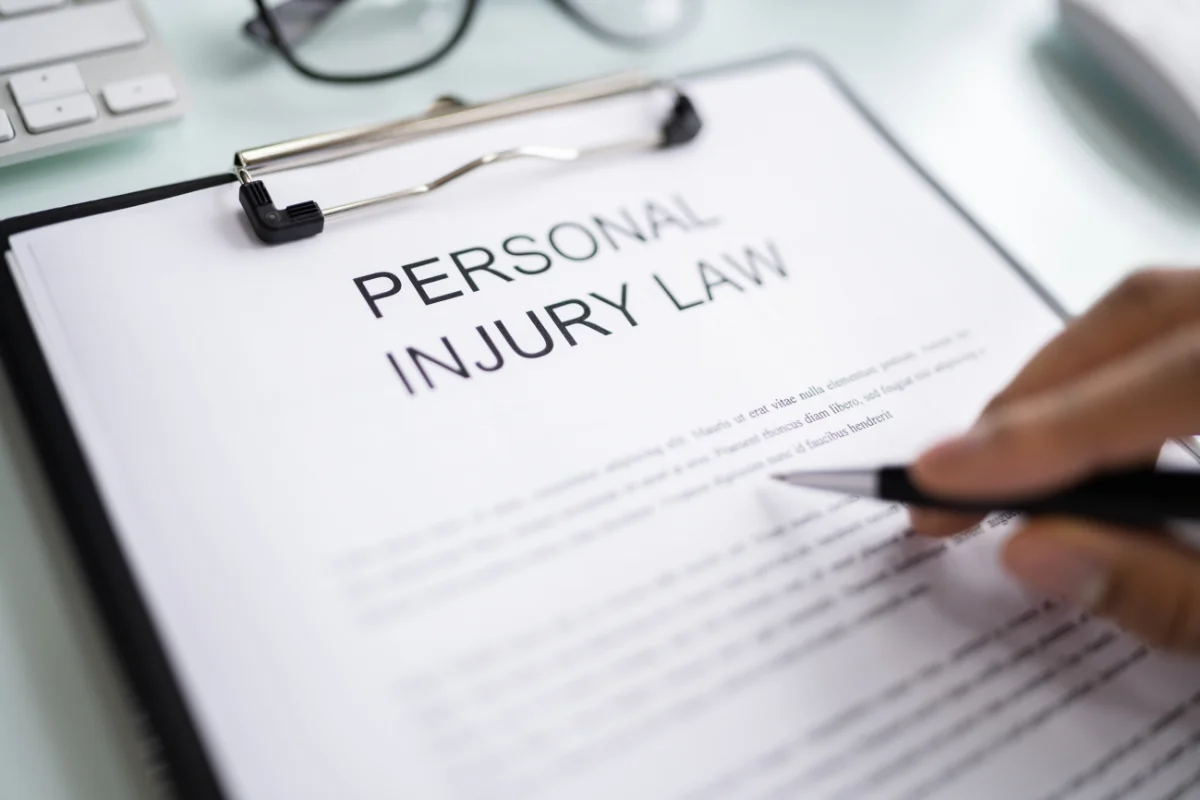Getting into a car accident can be a stressful and confusing experience. It becomes even more difficult if the other driver won’t admit fault. You might be thinking, “The car accident was not my fault, so how do I prove it?” or “In a side impact collision, who’s at fault in the UK?” If you find yourself in this situation, you’re not alone—and it’s important to know the steps you can take to protect yourself and your rights.
In this article, I’ll guide you through everything you need to know about proving a car accident was not your fault. You’ll learn about the kinds of evidence you should gather, how fault is determined, what to do if the other driver denies responsibility, and how the law works in the UK. This guide is designed to be easy to read and practical so that you can feel confident in handling your claim.
Understanding Fault in a Car Accident
First, let’s clear up what it means to be “at fault” in a car accident. In the UK, when an accident happens, the law looks at which driver failed to follow the rules or acted negligently, causing the accident. The driver responsible for the crash is “at fault.”
For example, if you were involved in a side impact collision, fault depends on the circumstances:
- If the other driver ran a red light and hit the side of your car, they are likely at fault.
- If you failed to give way at a junction and hit another car, you may be considered at fault.
Sometimes fault isn’t clear-cut. Both drivers may share responsibility, or there might be other factors such as poor weather or road conditions.
If the other driver won’t admit fault in the UK, this can complicate matters. But don’t worry—fault is not just about who says what. The evidence you gather can prove who was responsible.
Step 1: Stay Calm and Prioritise Safety
Right after an accident, your first priority should be safety. Check if anyone is hurt and call emergency services if necessary. If it’s safe, move vehicles out of traffic to prevent further collisions.
Once you’re safe, turn your attention to gathering information and evidence that will help prove the accident was not your fault.
Step 2: Collect Evidence at the Scene
Collecting evidence immediately after the crash is crucial. This evidence will be vital if the other driver won’t admit fault UK or if there is a dispute over what happened.
Here’s what you should do:
1. Take Photos and Videos
- Take clear photos of both vehicles from different angles, especially showing the damage.
- Photograph the accident scene, including road signs, traffic lights, skid marks, and the position of the cars.
- If the accident happened at an intersection or side road, capture the road layout.
- Take photos of any visible injuries you or your passengers have.
2. Write Down Details
- Note the date, time, and exact location of the accident.
- Write down the weather, lighting, and road conditions.
- Record the speed of both vehicles if you can estimate.
- Describe how the accident happened in your own words while it’s fresh in your mind.
3. Exchange Information
- Get the other driver’s name, address, phone number, insurance details, and vehicle registration number.
- Provide your information too, but don’t admit fault or blame anyone at the scene.
4. Collect Witness Details
- If anyone saw the accident, politely ask for their name and contact information.
- Witnesses can provide valuable independent statements if there is a disagreement later.
5. Look for CCTV or Dashcam Footage
- Check if there are any nearby CCTV cameras (shops, traffic cameras) that might have recorded the accident.
- If you have a dashcam, keep the footage safe and backed up.
- Sometimes other drivers nearby may also have dashcams with useful footage.
Step 3: Report the Accident to the Police if Necessary
In the UK, you must report certain accidents to the police:
- If anyone was injured.
- If the other driver refuses to provide their details.
- If there is damage to property other than your vehicle.
- If the driver left the scene without stopping.
Even if it’s not mandatory, filing a police report can help support your claim if the car accident was not my fault but the other party denies it.
Step 4: Seek Medical Attention
Some injuries might not be immediately obvious. Getting a medical check-up after the accident serves two purposes:
- Protecting your health by treating any injuries early.
- Creating medical records that link your injuries to the accident, which strengthens your compensation claim.
Keep all medical reports, prescriptions, and bills related to your treatment.
Step 5: Notify Your Insurance Company
Contact your insurance provider as soon as possible to report the accident. Be honest but avoid admitting fault. Explain that you believe the other driver was responsible and that you are gathering evidence.
Your insurer can provide advice and may begin their own investigation.
Step 6: Understand How Fault is Determined in the UK
If the other driver won’t admit fault UK, fault is usually determined by insurance companies, and sometimes by the courts. They assess evidence such as:
- Police reports.
- Witness statements.
- Photographs and videos.
- Traffic laws and the Highway Code.
- Damage patterns on the vehicles.
- Statements from both drivers.
For a side impact collision, who’s at fault UK depends on who had right of way, who broke the rules, and what caused the collision.
Insurance companies use this evidence to decide liability and how compensation should be paid.
Step 7: Get Legal Advice or Help from a Solicitor
If fault is denied and you believe you are not to blame, it is a good idea to speak to a solicitor who specialises in car accident claims. A solicitor can:
- Explain your rights.
- Help gather and organise evidence.
- Contact the other party’s insurer on your behalf.
- Represent you if the case goes to court.
Many solicitors work on a “No Win No Fee” basis, meaning you don’t pay unless your claim is successful. This makes getting legal help affordable.
Step 8: Keep Records and Stay Organised
Throughout the process, keep a folder with all your documents:
- Police report (if applicable).
- Medical records.
- Photographs and videos.
- Correspondence with insurers.
- Receipts for any expenses caused by the accident.
Being organised helps your claim move smoothly and increases your chances of success.
What to Do If the Other Driver Won’t Admit Fault in the UK
It can be frustrating if the other driver refuses to accept responsibility. Here are some tips:
- Don’t argue or admit fault yourself.
- Focus on gathering as much objective evidence as possible.
- Use witness statements and video footage to support your case.
- Let the insurance companies and, if needed, the courts decide fault based on evidence.
Remember, fault is a legal determination, not just a personal opinion.
Common Mistakes to Avoid
To protect yourself, avoid these common errors:
- Admitting fault at the scene. Even if you think you might have contributed, don’t admit fault until the facts are clear.
- Failing to gather evidence. Photos, witness info, and dashcam footage are key.
- Ignoring minor injuries. Some symptoms appear days later, so get medical help quickly.
- Not reporting the accident to police or insurer on time. This can jeopardise your claim.
- Accepting early settlement offers without advice. Insurers might offer less than you deserve.
FAQs
Q: How long do I have to prove a car accident wasn’t my fault?
You usually have 3 years from the date of the accident to start a personal injury claim in the UK.
Q: Can I still claim if I was partly at fault?
Yes, the UK follows a “comparative negligence” system, so you can still claim compensation proportional to the other party’s fault.
Q: What if the other driver has no insurance?
You can claim through the UK’s Motor Insurers’ Bureau, which compensates victims of uninsured or untraced drivers.
Q: Can a dashcam really help prove fault?
Absolutely. Dashcam footage provides objective evidence showing how the accident happened.
Final Thoughts
Proving a car accident was not your fault can seem complicated, especially if the other driver won’t admit fault UK. But with the right steps—collecting evidence, reporting properly, getting medical help, and seeking legal advice—you can build a strong case.
Remember, you don’t have to face this alone. Specialist solicitors and insurance experts can guide you every step of the way to help you get the compensation you deserve.
If you ever find yourself asking, “The car accident was not my fault, what do I do?”, refer back to these steps and take action promptly. Being prepared and informed is your best defence.




